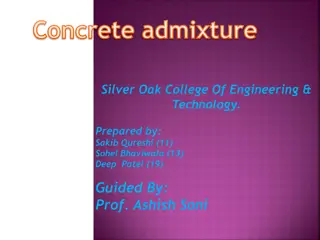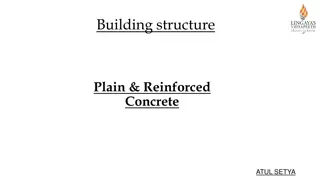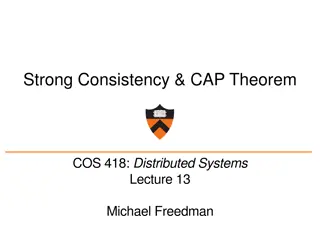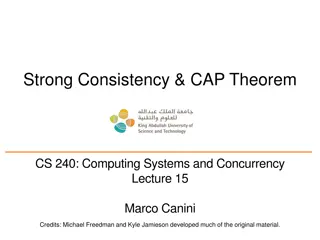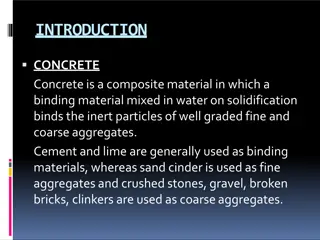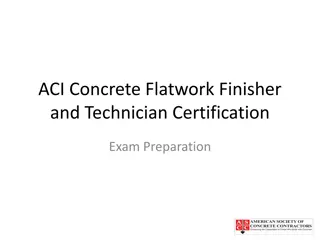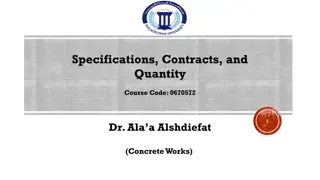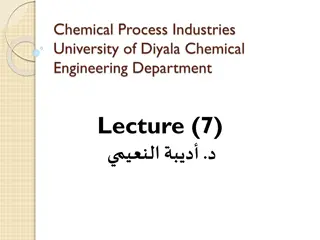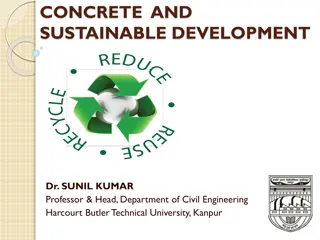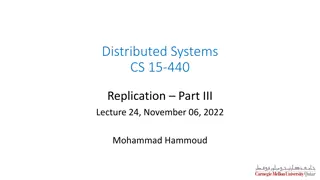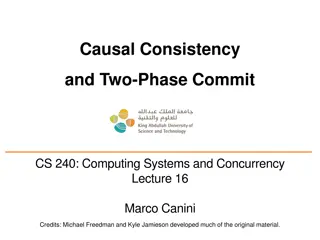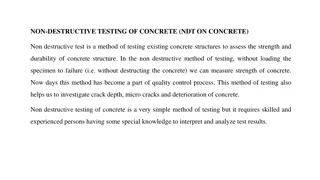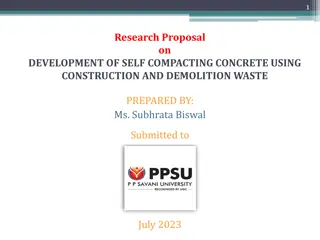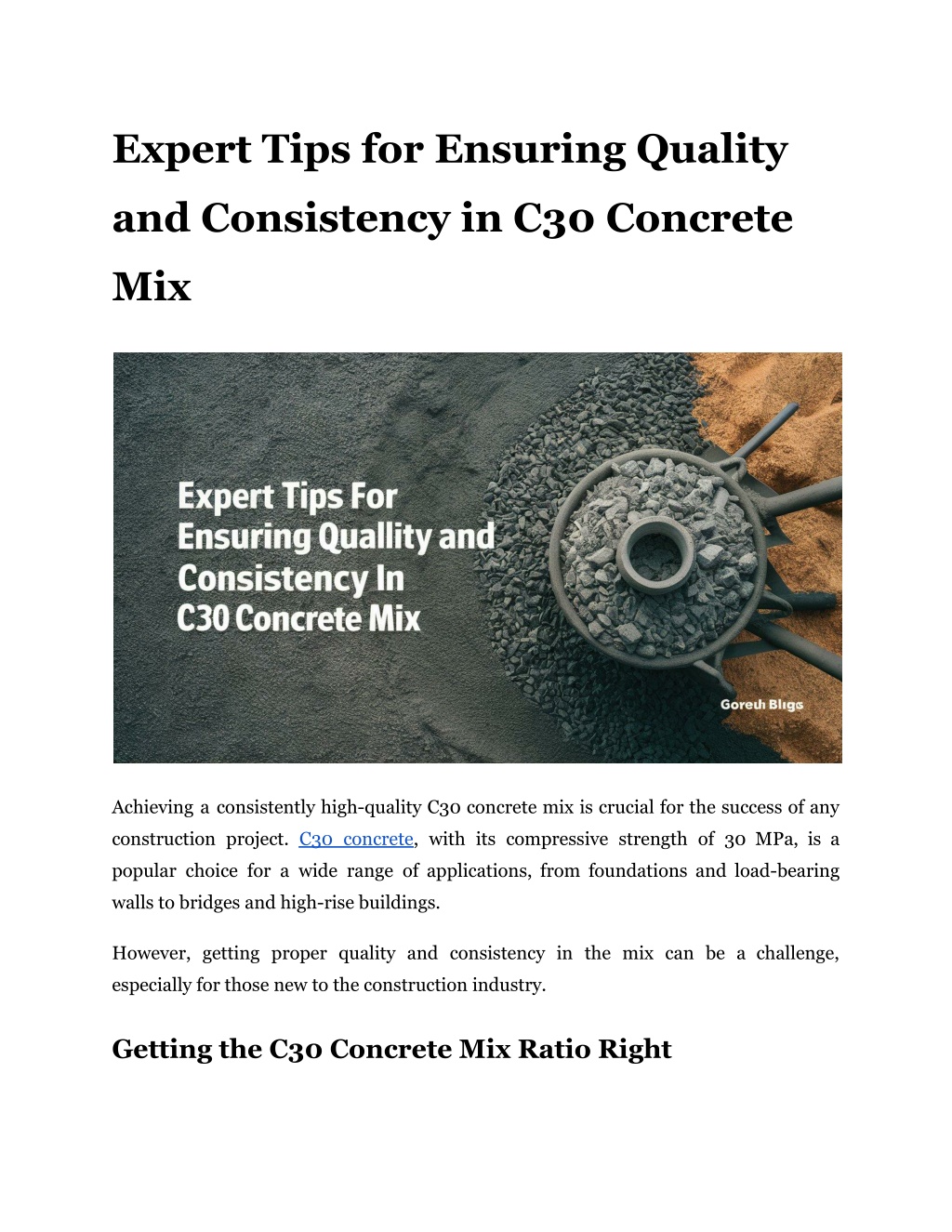
Expert Tips for Ensuring Quality and Consistency in C30 Concrete Mix
Learn expert tips to ensure the quality and consistency of your C30 concrete mix. Achieve reliable results with these practical guidelines!n
Download Presentation

Please find below an Image/Link to download the presentation.
The content on the website is provided AS IS for your information and personal use only. It may not be sold, licensed, or shared on other websites without obtaining consent from the author. Download presentation by click this link. If you encounter any issues during the download, it is possible that the publisher has removed the file from their server.
E N D
Presentation Transcript
Expert Tips for Ensuring Quality and Consistency in C30 Concrete Mix Achieving a consistently high-quality C30 concrete mix is crucial for the success of any construction project. C30 concrete, with its compressive strength of 30 MPa, is a popular choice for a wide range of applications, from foundations and load-bearing walls to bridges and high-rise buildings. However, getting proper quality and consistency in the mix can be a challenge, especially for those new to the construction industry. Getting the C30 Concrete Mix Ratio Right
The C30 concrete mix ratio refers to the proportions of cement, water, fine aggregates (sand), and coarse aggregates (gravel or crushed stone) used to create the concrete mixture. Compone Typical Mix Ratio for nt C30 Cement 1 Sand 2 Gravel 3 Water 0.5 It's important to note that these ratios are general guidelines and may vary depending on factors such as the specific project requirements, the type of aggregates used, and the desired workability of the concrete mix. Choosing High-Quality Materials One of the most critical factors for appropriate quality and consistency in the C30 concrete mix ratio is the use of high-quality materials. This includes: Cement: Choose a cement that meets relevant industry standards and is suitable for the specific project requirements. Aggregates: Use clean, well-graded fine and coarse aggregates that are free from impurities and conform to the necessary specifications. Water: Use fresh, clean water that is free from contaminants and suitable for drinking. Admixtures: If necessary, use admixtures such as plasticizers or retarders to enhance the workability or setting time of the concrete mix.
Read More Articles: Innovative Uses of C35 Concrete in Modern Architecture Not Messing Up The Measurements Inaccurate measurements can lead to variations in the mix proportions, which can affect the strength and performance of the concrete. For accurate measurements: Use calibrated measuring equipment: Use scales, buckets, or other measuring devices that have been calibrated for precise measurements. Follow the mix design: Adhere strictly to the specified mix design, using the correct proportions of cement, water, fine aggregates, and coarse aggregates. Adjust for moisture content: Take into account the moisture content of the aggregates and adjust the amount of water accordingly to maintain the desired water-cement ratio. Keep records: Keep detailed records of the mix proportions used for each batch of concrete, including the quantities of each material and the water-cement ratio. Following The Proper Mixing Technique The mixing technique used for C30 can also impact how the final product turns out. Use a suitable mixer: Choose a mixer that is appropriate for the size of the project and capable of producing a homogeneous mix. Follow the mixing sequence: Add the materials to the mixer in the correct order, starting with the coarse aggregates, followed by the fine aggregates, cement, and water. Mix for the recommended duration: Mix the concrete for the recommended duration, typically around 5 minutes, to guarantee that all the materials are thoroughly combined and the mix is homogeneous. Monitor the slump: Regularly check the slump of the concrete mix to see if it falls within the specified range for C30 concrete, typically between 50-100 mm.
Proper Placement and Compaction Once the C30 mix has been prepared, proper placement and compaction are essential to maintain quality and consistency. To achieve this: Transport the concrete carefully: Handle and transport the concrete carefully to avoid segregation or loss of workability. Place the concrete promptly: Place the concrete promptly after mixing so it can be properly compacted. Use appropriate compaction methods: Use suitable compaction methods, such as vibration or tamping, to remove air pockets so the concrete fills all the spaces in the formwork or mold. Finish the surface: Finish the surface of the concrete using appropriate tools, such as a screed or trowel, to achieve the desired finish and a smooth, even surface. Properly Curing The Concrete Proper curing translates into the long-term quality and consistency of C30 concrete. Curing helps to maintain the moisture content of the concrete, allowing it to develop its full strength and durability. Start curing promptly: Begin curing the concrete as soon as possible after placement, typically within 12-24 hours. Use appropriate curing methods: Use suitable curing methods, such as water curing, membrane curing, or steam curing, depending on the project requirements and environmental conditions. Maintain curing conditions: Maintain the appropriate curing conditions, such as temperature and humidity, throughout the curing period to ensure that the concrete develops its full strength and durability.
Monitor curing progress: Monitor the progress of curing regularly to see if the concrete is developing as expected and to identify any potential issues early on. Quality Control and Testing Conducting regular tests: Conduct regular tests on the concrete mix, such as slump tests, compressive strength tests, and durability tests, so it meets the required specifications. Keeping detailed records: Keep detailed records of all test results, including the date, time, and location of the tests, as well as any corrective actions taken. Implementing quality control measures: Implement quality control measures, such as regular inspections and audits, to ensure that the concrete production process is being followed correctly and consistently. Addressing any issues promptly: Address any issues or non-conformities promptly, taking corrective action to maintain the quality and consistency of the concrete mix. Read More Articles: Exploring Different Cannabis Products Available Online The Wrap Up Achieving consistent quality in C30 concrete requires meticulous attention to detail and adherence to best practices. While these guidelines provide a solid foundation, every construction project has unique requirements. For the best results, it's always advisable to consult with concrete specialists who can tailor the mix design to your specific needs and local conditions. If you have any further questions or would like to discuss your C30 concrete requirements in more detail, contact Pro-Mix Concrete. The experts are always ready to assist you in achieving the best possible results for your construction projects.
Site Article: Expert Tips for Ensuring Quality and Consistency in C30 Concrete Mix

